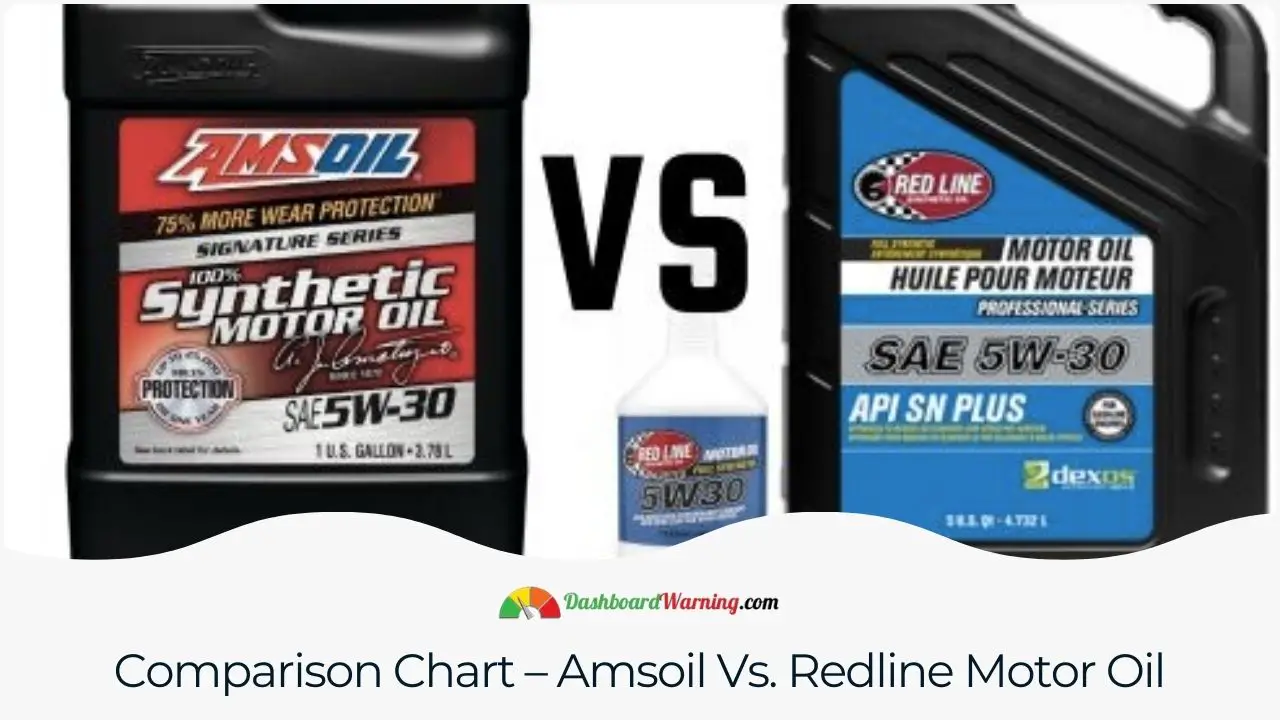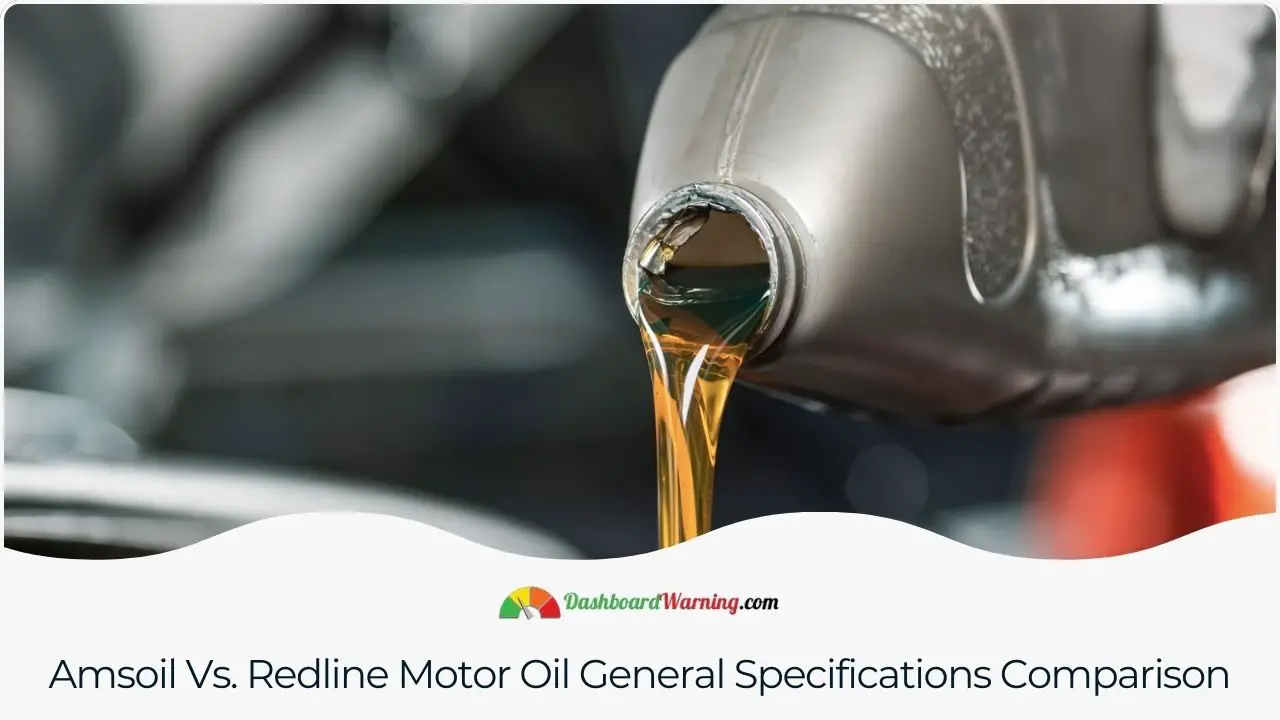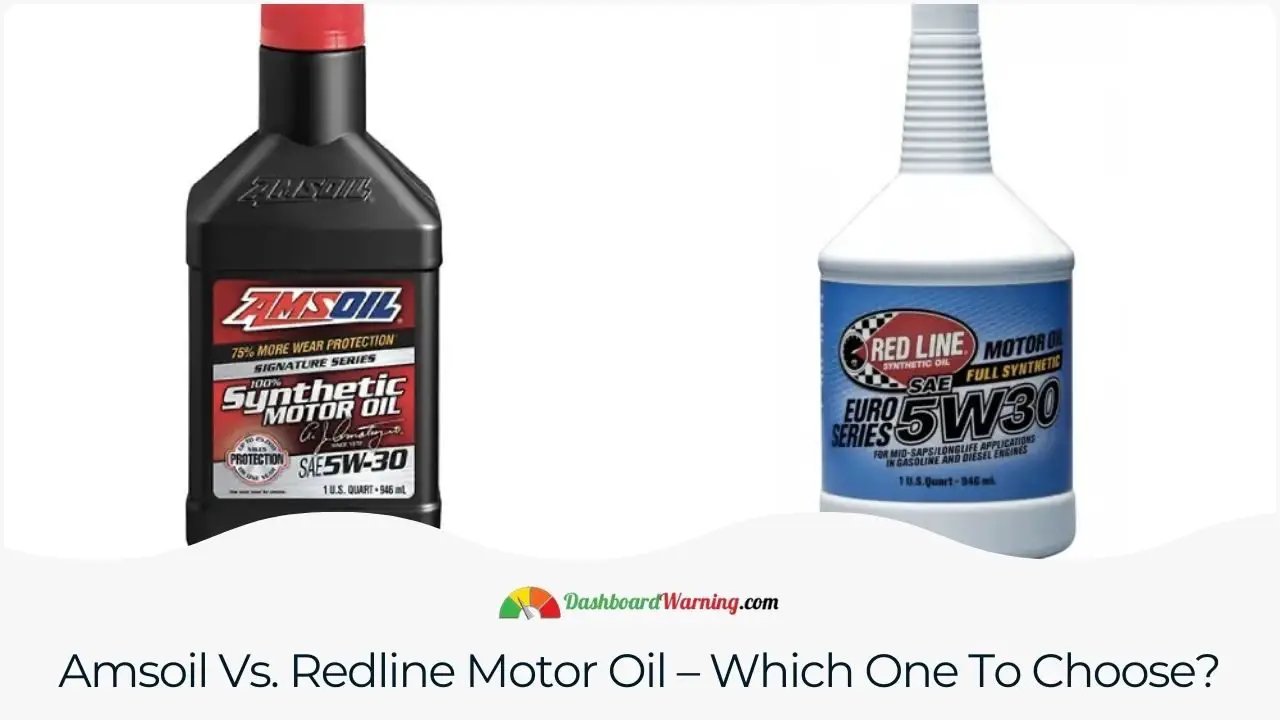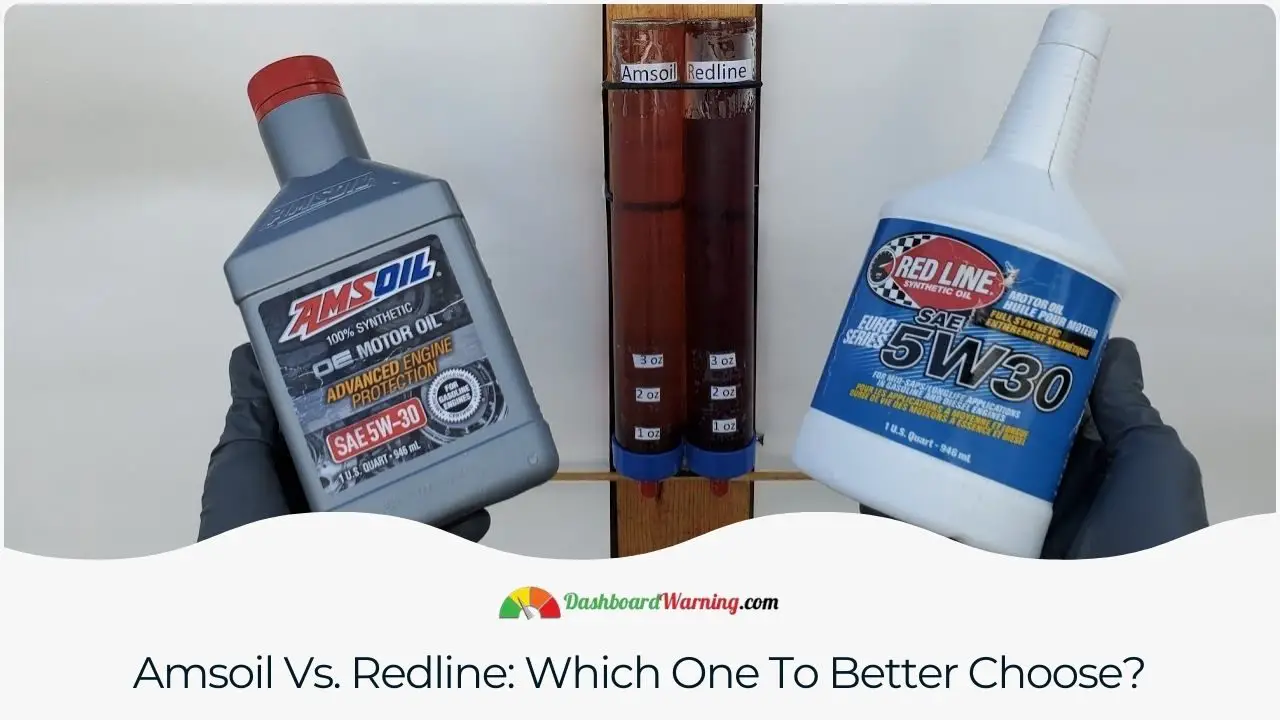Due to their higher efficiency level, synthetic engine oils have become a preferred motor choice. Compared to conventional engine oils, synthetic motor oils are better in terms of convenience and cost-effectiveness. While there is no shortage of brand names when it comes to synthetic motor oil, two brands that stand out amongst the competition would be Amsoil Vs. Redline Motor Oil.
These gear oils have undergone rigorous testing and shown distinct differences between them. Both applications, such as passenger cars, light trucks, tractors, marine systems, and performance vehicles, benefit from using either. When deciding which will suit your needs best, we suggest you dive into the details to understand how they work differently before deciding which works best for you.
Comparison Chart – Amsoil Vs. Redline Motor Oil

| Amsoil Motor Oil | Redline Motor Oil |
| Maintains the best flow at cold temperature | Provides best oil flow at high temperature |
| Increased base number(13) than Redline | Low base number(10) than Amsoil |
| Cold Cranking Viscosity 3700 | Cold Cranking Viscosity 6400 |
| It doesn’t allow the creation of many deposits in oxidation | More deposit is formed in the oxidation |
| Evaporation is higher in hot temperature | Evaporation is minimal in hot temperature |
| Resists Corrosion by creating an iron-sulfide barrier layer on the gear surface | Prevents Friction and Corrosion well |
| Added additives keep the oil fresh and the engine smooth | Added detergent additives clean the inside |
| Expensive than Redline | Cheaper than Amsoil |
Amsoil Vs. Redline Motor Oil General Specifications Comparison

Drivers can briefly review the two engine oil specifications using the comparison chart. Read on to explore these specifications in more detail.
Pour Test
The pour test of motor oil is an essential piece of information when choosing the right one. This test defines the viscosity or thickness of the oil, and its results can significantly affect engine performance. Two popular brands were tested to show this in practice: Amsoil Vs. Redline.
Results showed that Amsoil was thinner than Redline due to shorter flow times on standard and cold pour tests. This means it would be better for engines as a more delicate oil runs faster through them while also providing good cold start quality even in low temperatures. On the other hand, Redline may be suitable for average temperatures but struggles with colder environments where frequent flow is needed.
Base Number Comparison
The base number of lubricants is an essential factor in car motor oil. Different gear lubricants are made with many chemical components, and these can form acids due to chemical reactions in the suspension system. To ensure that the right amount of acids is present, all lubes must maintain a ratio measured by performing tests known as the base number.
Amsoil and Redline have similar properties but differ in their base numbers - 13 for Amsoil and 10 for Redline. This higher base number determines the Alkalinity regaining capability of Amsoil lubricant, making it more desirable compared to other options such as Redline. In this regard, one should consider their engine’s specific needs before settling on any particular type of oil.
Corrosion And Friction Resistance
When discussing engine oil, one crucial factor to consider is the base number of the oil. A higher base number in engine oil indicates it is better suited for preventing corrosion and wear on metal parts. Amsoil has a high base number and, as such, can help reduce erosion. When metal components come into contact with each other due to tight spaces inside an engine, there is potential for friction and wear, which can be damaging over time.
Redline motor oil also helps protect against this damage by having a thicker viscosity than most oils. This thickness prevents metal-to-metal contact from occurring, helping extend the life of an engine's parts while increasing its efficiency and performance overall. Amsoil and Redline are effective at providing protection against corrosion, wear, and friction when used in automobiles; however, Redline does so more effectively due to its higher viscosity.
Evaporation Test And Oxidation
The two tests, evaporation and oxidation, are performed to analyze the performance of engine oil when exposed to high temperatures. The results from both tests show that Amsoil fares better than Redline regarding fuel economy and deposits created, respectively. In the evaporation test, Amsoil evaporates more at hot temperatures compared to Redline, which resulted in needing more frequent oil input, thus costing you more. Conversely, Redline has increased fuel economy due to less evaporation. Furthermore, Amsoil produces fewer deposits than Redline during a thermal oxidation test. Overall, Amsoil is a superior choice when considering its performance under hot temperature conditions.
Price Comparison
Redline motor oil offers an alternative to those who are looking for a cheaper option when it comes to engine oils. While the price may be lower than other brands on the market, it does not mean that Redline is a substandard product; instead, its engineers have crafted their products with efficiency in mind. Redline can provide adequate protection and performance for light vehicles at a more budget-friendly cost.
However, for those heavy operating vehicles or ones that must deal with excessive loads, Amsoil may be the preferable option as their extensive experience has been put into practice during production, resulting in higher quality but pricier oils. In conclusion, while there are tradeoffs between these two brands based on price and materials' quality, both offer viable options depending on one's needs and requirements.
Amsoil Vs. Redline Motor Oil – Which One To Choose?

Considering the competitive rivalry between Amsoil and Redline, it is essential to analyze both of their products before deciding. Amsoil should be the top choice when selecting an oil that can work effectively at hot and cold temperatures. Although the price tag may be higher than other brands available, its performance in all climates makes up for it.
On the other hand, if you are mainly driving under hot conditions, Redline might be more suitable for your needs. This oil stays stable even at high temperatures while resisting engine oxidation–two factors making it an excellent choice for some drivers. With this knowledge, pick whichever product best suits your needs and budget after extensive research into each one's properties and benefits.
Final Words
The discussion regarding Amsoil vs. Redline Motor Oil has now come to an end. It is expected that a decision can be made and implemented with the presented information.
Was this page helpful?


More important content about Tips and Advice
Porsche Cayenne Years To Avoid
Subaru Legacy Years To Avoid - 5 Worst Years
Pt Cruiser Years To Avoid
Use 5w30 instead of 0w20 - Advantages and Disadvantages
Tractor Dashboard Symbols And Meanings
Tips and Advice
Subaru Legacy Years To Avoid - 5 Worst Years
Pt Cruiser Years To Avoid
Use 5w30 instead of 0w20 - Advantages and Disadvantages
Tractor Dashboard Symbols And Meanings
Suzuki Sx4 Years To Avoid - 5 Worst Years
Cummins ISX Years To Avoid and Why